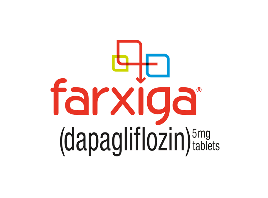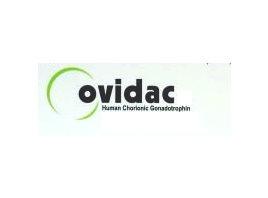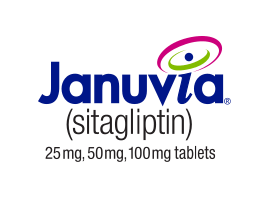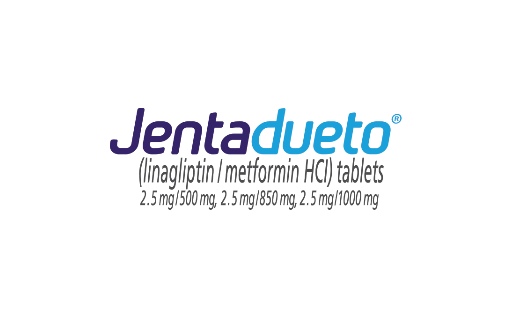- Your cart is empty
- Continue Shopping
Product
- Canadian Pharmacy Online Pharmacy | Online Canadian Pharmacy
- Need More Information Call Us 1-833-356-6337
Dapagliflozin (Generic Farxiga) | 90% Off | Certified Canadian Pharmacy
What is Dapagliflozin?
Farxiga is also known as Forxiga and it is an antidiabetic medicine used alongside diet and regular exercise to help lower blood sugar levels in adults with type 2 diabetes. Forxiga is a brand name medication. Its active ingredient is dapagliflozin, which is also the generic version of this medication. It belongs to the gliflozin family of antidiabetic drugs.
What is it used for?
Farxiga is used to help lower blood sugar levels in adults with type 2 diabetes, and should not be used to treat people with type 1 diabetes, or those with diabetic ketoacidosis (an increase in ketones in your blood or urine).
How does Dapagliflozin work?
Farxiga, like other members of the gliflozin family of antidiabetic drugs, works by decreasing the re-absorption of blood sugar back into your kidneys.
With less blood sugar being absorbed back into the kidneys, more blood sugar is eliminated through your urine. This results in less sugar in your blood. Not only does it help control your blood sugar levels, but it also may also help you reduce your body weight and blood pressure.
How to take this medication
Farxiga is recommended to be taken in the morning, with or without food, but try to take your dose the same way each time. Always follow all the directions on your prescription label. Your doctor may change your dose from time to time in order for you to get the best results. Never take it in larger or smaller amounts or for longer than your doctor recommends.
The Dapagliflozin medication can be used:
- alone, if you cannot take Metformin,
- with Metformin
- with a Sulfonylurea
- with Metformin and a Sulfonylurea
- with Sitagliptin (with or without Metformin)
- with insulin (with or without Metformin)
Your blood sugar will likely need to be checked often, and you may also need to get other medical tests at your doctor’s office.
Farxiga is only one part of your treatment program that should also include a healthy diet, regular exercise, weight control, and regular blood sugar level monitoring.
Report to your doctor about all the current medication you are taking, or any you start or stop using, especially:
- Diuretics (water pills)
- Heart or blood pressure drugs
- NSAIDs (nonsteroidal anti-inflammatory drugs) such as ibuprofen (Advil, Motrin), naproxen (Aleve), and others
Dapagliflozin Dosage
The recommended starting dose is 5 mg once daily, taken in the morning, with or without food. Your doctor may increase your dose to 10 mg once daily if you are tolerating the drug well and require additional blood sugar level control.
You should have your kidney function monitored before, during and after taking the drug.
If used in combination with insulin, or any related drugs, your doctor will likely prescribe a lower dose of insulin or the related drug in order to reduce the risk of low blood sugar.
If you should happen to miss a dose, take it as soon as possible.
If you do not happen to remember until it is almost time for your next dose, skip the dose you missed, and go back to your regular dosing schedule. Do not take a double dose to make up for missed doses.
Warnings and Precautions
Do not take Dapagliflozin this drug if you:
- have any allergies to dapagliflozin
- have serious kidney problems, or are currently on dialysis
- Before you take Farxiga, tell your doctor:
- all of your current, and previous medical conditions, especially problems with your kidneys, bladder, liver, or pancreas
- if you had, or have risk factors for, ketoacidosis
- if you are pregnant, or are planning on becoming pregnant
- if you are breastfeeding, or are planning to breastfeed
- about all the medication you take, including prescription and nonprescription medicines, vitamins, and supplements
Dapagliflozin side effects
If you have any signs of an allergic reaction to Farxiga, immediately stop taking the medication and get emergency medical help. Some signs you may be having an allergic reaction to the medication are hives, difficulty breathing and swelling of your lips, throat, face, or tongue.
Common negative effects include:
- Sore throat
- Influenza
- Constipation
- Diarrhea
- Back pain
- Pain in arms, legs, hands or feet
- Headache
- Rash
- Yeast infections of the vagina or penis
- Changes in urination, including the urgent need to urinate more often, in greater amounts, or at nighttime
Serious negative effects include:
- Ketoacidosis (increased ketones in your blood or urine)
- Dehydration (loss of water and salt), which may make you feel dizzy
- Low blood sugar (hypoglycemia)
- Serious urinary tract infections (UTI)
- Kidney problems
- Vaginal yeast infections
- Yeast infection of skin around penis (balanitis)
- Increase in “bad” cholesterol (LDL cholesterol)
- Bladder cancer
Farxiga may cause abnormal blood test results. Your doctor will decide when to perform blood tests, and they may check your kidney function, blood fat levels (low density lipoprotein cholesterol or LDL cholesterol) and amount of red blood cells in your blood (hematocrit).
Talk to your health care provider about any side effect that bothers you or does not go away. These are not all the possible negative effects. Call your doctor for medical advice about side effects.
What is Farxiga (Dapagliflozin) 5mg?
Farxiga is an oral antidiabetic medication that is only available through a prescription. It has dapagliflozin, a sodium-glucose co-transporter 2 inhibitor, that blocks sugar reabsorption in the kidneys. Farxiga 5mg tablets is supplied with 30 tablets per pack.
What is it used for?
Farxiga is used to treat adults with type 2 diabetes mellitus and is meant to be used alongside proper diet and adequate exercise. Farxiga can be used more optimally when combined with other forms of antidiabetic medications, such as metformin, sulfonylureas, and insulin. That being said, there is a need for a lower dose with these medications, as there is a higher chance of hypoglycemia when used together.
Why use this medication?
Farxiga is used because it can be conveniently given in the morning with or without food. Studies have also confirmed its efficacy to lower HbA1C levels significantly (about 1.0%). It can also potentially give rise to other forms of beneficial effects, such as weight reduction by about 3% and lower systolic blood pressure.
Farxiga is an effective medication on its own but its effects can be raised when used with metformin, for example. Studies show that Farxiga 5mg can reduce HbA1C levels by 1.2% and metformin lowers these levels by 1.4%, but, when combined, their synergistic effects contribute to a 2.1% reduction. Similar efficacy was also demonstrated for other commonly prescribed antidiabetic medications, such as pioglitazone, sitagliptin, glimepiride, and insulin.
What is Farxiga 10mg?
Farxiga is a prescription medication containing the active ingredient dapagliflozin, which is part of the drug class called sodium-glucose co-transporter 2 inhibitors. It works mainly by blocking sugar reabsorption in the kidneys. It is taken orally, usually once a day in the morning. Farxiga is supplied with 30 tablets in a pack.
What is it used for?
Farxiga is meant to be used along with diet and exercise to help reduce blood sugar levels in patients diagnosed with type 2 diabetes mellitus. Other antidiabetic medications, such as insulin and sulfonylureas, can be used together with Farxiga; however, a dose reduction is needed, as there is an increased chance of hypoglycemia.
Why use this drug?
Farxiga can be conveniently taken with or without food. Studies found that Farxiga is effective in blood sugar control, as it lowers the HbA1C level and is one of few drugs capable of removing blood sugar through the urine.
Additional benefits, such as reduction in systolic blood pressure and weight loss as much as 3%, were also shown conclusively.
Farxiga has been shown to reduce HbA1C levels more than metformin alone. This shows that when Farxiga and metformin are taken together, it leads to better blood sugar control in patients where their response may be suboptimal with just metformin.
In the same study, Farxiga 10mg lowered HbA1C levels by 1.5%, compared to 1.4% with metformin; however, when both were given together, the HbA1C levels dropped by 2.0%.
NOTES:
The information contained on this website is intended as an educational aid only. It is not intended as medical advice for individual conditions or treatment. It is not a substitute for a medical exam, nor does it replace the need for services provided by medical professionals. Talk to your doctor, nurse or pharmacist before taking any prescription or over the counter drugs (including any herbal medicines or supplements) or following any treatment or regimen. Only your doctor, nurse, or pharmacist can provide you with advice on what is safe and effective for you.







